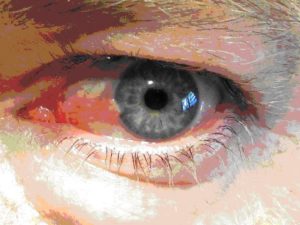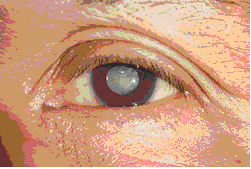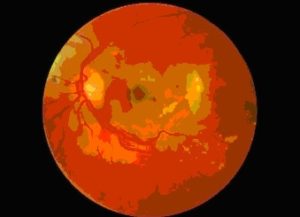With around 147,000 cases of skin cancer in the UK per year as a nation we have become very good at applying sun cream to protect our skin from harmful UV.
So why do I walk down the street on a bright sunny day and see hundreds of people without sunglasses on? Why do a lot of people care for their skin and not their eyes? I think it’s because more often than not the damage that UV causes to our eyes cannot be seen as well as sunburn or cancerous mole.
So what are the main eye conditions that can be caused by UV?
Cataracts
It is estimated UV causes or accelerates around 20% of cataract cases. A cataract is the clouding of your normally clear crystalline lens which sits just behind the iris (the coloured part of the eye). As a cataract progresses it becomes more and more difficult to read in low light or drive a car at night until eventually an operation is needed to remove it. There are of course other causes of cataracts but we’ll delve into that another day!
Macular degeneration
Unlike a cataract, macular degeneration cannot be cured, only monitored as most types of the disease cannot be treated. It affects your central vision due to damage caused to the retinal cells at the back on the eye. This causes distortion of vision, fading of colour and difficulty adapting to light conditions to name a few. This is not sudden, the disease progresses over time, sometimes many years. Again there are other causes of macular degeneration but if protecting your eyes from UV helps it’s a no brainer right?
Pterygium
This is a little tissue growth that develops over the front surface of your eye. Sometimes it can grow towards the centre of the eye affecting vision, if/when it gets to this stage it is normally surgically removed but it can grow back. UV is thought to be the most significant cause of pterygia and is more common in those who work outside (farmers, builders). It is also more common in those who live in areas where the ozone layer is depleted such as New Zealand.
These are just a handful of eye conditions that can be caused by UV.
Let’s talk about UV itself, there are three different categories of UV; UVA, UVB and UVC. UVA and UVB are the ones we tend to worry about for the eyes as luckily our ozone layer blocks out most UVC rays. However with the ozone layer depleting there could be more risk in future for skin and eye damage.

So you’re probably thinking, how do I protect my eyes from UV? Just simply put on a good quality pair of sunglasses and by good quality we don’t mean designer (although we love designer eyewear)! They have to block out 100% of harmful UVA and UVB, luckily most sunglasses sold in the UK meet this requirement but if you’re unsure pop in and one of our dispensing team will test them free of charge using our specialist equipment.
If you don’t have any sunglasses we recommend you put them on your shopping list, we sell a vast range and you certainly don’t have to break the bank (unless you want to)! The other option is photochromatic lenses (lenses that change dependent on lighting conditions) especially useful if you wear prescription glasses!
So there you have it, a simple solution to a potentially harmful problem but as always if you have any questions our team are a phone call or email away.

